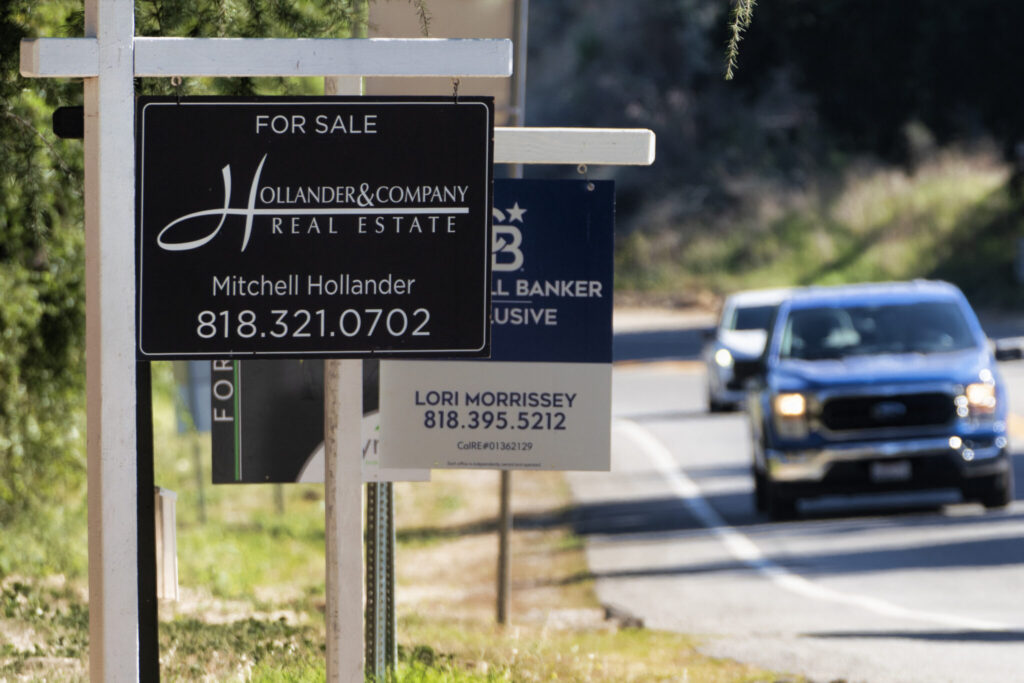Sales of previously occupied U.S. homes slumped in October to their slowest pace in more than 13 years as surging mortgage rates and rising prices kept many prospective homebuyers on the sidelines. Existing home sales fell 4.1% last month from September to a seasonally adjusted annual rate of 3.79 million, the National Association of Realtors said Tuesday. That’s weaker than the 3.90 million sales pace economists were expecting, according to FactSet.
Quick Read
- U.S. Home Sales Drop: Sales of previously occupied homes in the U.S. declined by 4.1% in October, reaching a seasonally adjusted annual rate of 3.79 million. This is the lowest pace since August 2010.
- Expectations Surpassed: The sales pace was weaker than the anticipated 3.90 million, according to economists’ forecasts by FactSet.
- Continuous Decline: Home sales have decreased for five consecutive months, impacted by rising mortgage rates and limited housing inventory.
- Rising Home Prices: Despite the sales slump, the national median sales price in October was up 3.4% from the previous year, reaching $391,800.
- Challenges in the Housing Market: High mortgage rates and a scarcity of available homes are major hindrances to sales, according to NAR’s chief economist Lawrence Yun.
- Impact of Mortgage Rates: The average rate on a 30-year mortgage exceeded 7% in September, adding significant costs for borrowers and discouraging current homeowners from selling.
- Market Competition: The market remains competitive due to a chronic shortage of homes, with properties often selling within 23 days and 28% of homes selling above list price.
- Inventory Levels: There were 1.15 million homes available at the end of October, a slight increase from September but a 5.7% drop from the previous year.
- Sales Distribution: Sales declined for homes priced between $100,000 and $250,000 but increased for homes above $1 million.
- Seller’s Market: Sellers continue to have an advantage, with multiple offers common and buyers often waiving inspections and appraisals.
- Challenges for First-Time Buyers: First-time homebuyers, who historically made up 40% of sales, accounted for only 28% of sales in October.
- Potential Future Relief: Mortgage rates might decline in the coming months, with forecasts suggesting a drop below 7%, possibly to around 6.5% by spring. However, more inventory is still needed for a significant turnaround in affordability.
The Associated Press has the story:
Home sales slumped to slowest pace in more than 13 years in October
Newslooks- LOS ANGELES (AP)
Sales of previously occupied U.S. homes slumped in October to their slowest pace in more than 13 years as surging mortgage rates and rising prices kept many prospective homebuyers on the sidelines.
Existing home sales fell 4.1% last month from September to a seasonally adjusted annual rate of 3.79 million, the National Association of Realtors said Tuesday. That’s weaker than the 3.90 million sales pace economists were expecting, according to FactSet.
The last time sales slumped this hard was in August 2010, when the housing market was in recovery from a severe crash.
Sales sank 14.6% compared with the same month last year. They have fallen five months in a row, held back by climbing mortgage rates and a thin supply of properties on the market.
Despite the decline in sales, home prices keep climbing compared with this time last year. The national median sales price rose 3.4% from October last year to $391,800.
“Lack of inventory along with higher mortgage rates are really hindering home sales,” said Lawrence Yun, the NAR’s chief economist.
The weekly average rate on a 30-year mortgage hovered above 7% in September, when many of the home sales that were finalized in October would have gone under contract. It has remained above that threshold since, surging in late October to 7.79%, the highest average on records going back to late 2000, according to mortgage buyer Freddie Mac. Last week, the rate averaged 7.44%.
High rates can add hundreds of dollars a month in costs for borrowers, limiting how much they can afford in a market already out of reach for many Americans. They also discourage homeowners who locked in far lower rates two years ago, when they were around 3%, from selling.
Despite the pullback in sales, homebuyers still had to navigate a competitive market due to the chronic shortage of homes for sale, especially the most affordable homes.
Homes sold last month typically within just 23 days after hitting the market, and about 28% of properties sold for more than their list price, a sign that many homes are still receiving multiple offers, the NAR said.
All told, there were 1.15 million homes on the market by the end of last month, up 1.8% from September, but down 5.7% from October last year, the NAR said. Before the pandemic, there were roughly twice as many homes on the market.
The available inventory at the end of last month amounts to a 3.6-month supply, going by the current sales pace. In a more balanced market between buyers and sellers, there is a 4- to 5-month supply.
Sales remain weakest among the most affordably priced homes. Sales for homes priced between $100,000 and $250,000 sank 18% in October from a year earlier. However, sales jumped 9% among homes priced at $1 million or above.
“On the upper end we do have more inventory and we are seeing more sales, clearly implying that if we have more inventory sales can occur,” Yun said.
Despite the sales decline, the trickle of homes being put on the market continues to give sellers an advantage over buyers. Not only are multiple offers still happening with nearly a third of all homes sold, but homebuyers are increasingly waving home inspections and appraisals in hopes of edging out other buyers.
“Given the lack of inventory, home sellers are essentially in the driver’s seat,” Yun said.
The combination of higher mortgage rates and rising prices has particularly stymied first-time homebuyers who don’t have any home equity to put toward their down payment. They accounted for just 28% of all homes sold last month. Historically, it was not unusual for them to make up 40% of sales.
Prospective homebuyers could be in for some good news in coming months, if mortgage rates continue to ease.
Rates have been declining in recent weeks along with the 10-year Treasury yield, which lenders use as a guide to pricing loans. The yield, which just a few weeks ago was above 5%, its highest level since 2007, has fallen amid hopes that inflation has cooled enough to pave the way for the Federal Reserve to cut rates.
Yun is forecasting that the average rate on the 30-year home loan will dip below 7%, perhaps to 6.5%, by spring.
“Maybe we will begin to see some turnaround in affordability, but we still need inventory,” he said.







